

Compact Muon Solenoid
LHC, CERN
| CMS-HIN-13-004 ; CERN-PH-EP-2014-235 | ||
| Study of Z production in PbPb and pp collisions at $\sqrt{s_{NN}}$ = 2.76 TeV in the dimuon and dielectron decay channels | ||
| CMS Collaboration | ||
| 17 October 2014 | ||
| J. High Energy Phys. 03 (2015) 022 | ||
| Abstract: The production of Z bosons is studied in the dimuon and dielectron decay channels in PbPb and pp collisions at $\sqrt{s_{\mathrm{NN}}}$ = 2.76 TeV, using data collected by the CMS experiment at the LHC. The PbPb data sample corresponds to an integrated luminosity of about 150 $\mu\mathrm{b}^{-1}$, while the pp data sample collected in 2013 at the same nucleon-nucleon centre-of-mass energy has an integrated luminosity of 5.4 $\mathrm{pb}^{-1}$. The Z boson yield is measured as a function of rapidity, transverse momentum, and collision centrality. The ratio of PbPb to pp yields, scaled by the number of inelastic nucleon-nucleon collisions, is found to be 1.06 $\pm$ 0.05 (stat) $\pm$ 0.08 (syst) in the dimuon channel and 1.02 $\pm$ 0.08 (stat) $\pm$ 0.15 (syst) in the dielectron channel, for centrality-integrated Z boson production. This binary collision scaling is seen to hold in the entire kinematic region studied, as expected for a colourless probe that is unaffected by the hot and dense QCD medium produced in heavy ion collisions. | ||
| Links: e-print arXiv:1410.4825 [hep-ex] (PDF) ; CDS record ; inSPIRE record ; Public twiki page ; HepData record ; CADI line (restricted) ; | ||
| Figures | |
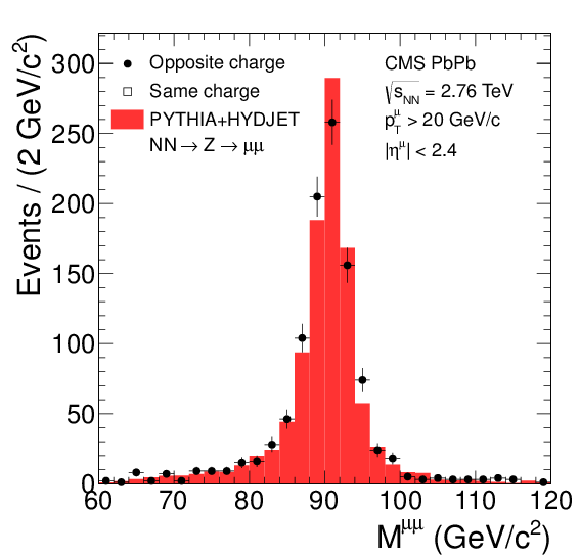
png pdf |
Figure 1-a:
Dimuon invariant mass spectra for muons with $ {| \eta ^ {{\mu }} | } < 2.4$ and $ {p_{\mathrm {T}}} ^\mu > 20$ GeV/$c$ in PbPb (a) and in pp (c) collisions and dielectron invariant mass spectra for electrons with $ {| \eta ^ {\mathrm {e}} | } < 1.44$ and $ {p_{\mathrm {T}}} ^{ {\mathrm {e}}}>20$ GeV/$c$ in PbPb (b) and in pp (d) collisions. Full black circles represent opposite-charge lepton pair events and open black squares represent same-charge lepton pair events. Superimposed and normalized to the number of Z boson candidates in data is the MC simulation from PYTHIA $\mathrm {NN}\to {\mathrm {Z}}\to {{\mu ^+}} {{\mu ^-}}$ or $ {\mathrm {e}^+} {\mathrm {e}^-}$, where N is a nucleon from the proper mix of protons and neutrons, embedded in HYDJET simulated events for the PbPb case, and $ {\mathrm {p}} {\mathrm {p}}\to {\mathrm {Z}}\to {{\mu ^+}} {{\mu ^-}}$ or $ {\mathrm {e}^+} {\mathrm {e}^-}$ for the pp case. |

png pdf |
Figure 1-b:
Dimuon invariant mass spectra for muons with $ {| \eta ^ {{\mu }} | } < 2.4$ and $ {p_{\mathrm {T}}} ^\mu > 20$ GeV/$c$ in PbPb (a) and in pp (c) collisions and dielectron invariant mass spectra for electrons with $ {| \eta ^ {\mathrm {e}} | } < 1.44$ and $ {p_{\mathrm {T}}} ^{ {\mathrm {e}}}>20$ GeV/$c$ in PbPb (b) and in pp (d) collisions. Full black circles represent opposite-charge lepton pair events and open black squares represent same-charge lepton pair events. Superimposed and normalized to the number of Z boson candidates in data is the MC simulation from PYTHIA $\mathrm {NN}\to {\mathrm {Z}}\to {{\mu ^+}} {{\mu ^-}}$ or $ {\mathrm {e}^+} {\mathrm {e}^-}$, where N is a nucleon from the proper mix of protons and neutrons, embedded in HYDJET simulated events for the PbPb case, and $ {\mathrm {p}} {\mathrm {p}}\to {\mathrm {Z}}\to {{\mu ^+}} {{\mu ^-}}$ or $ {\mathrm {e}^+} {\mathrm {e}^-}$ for the pp case. |
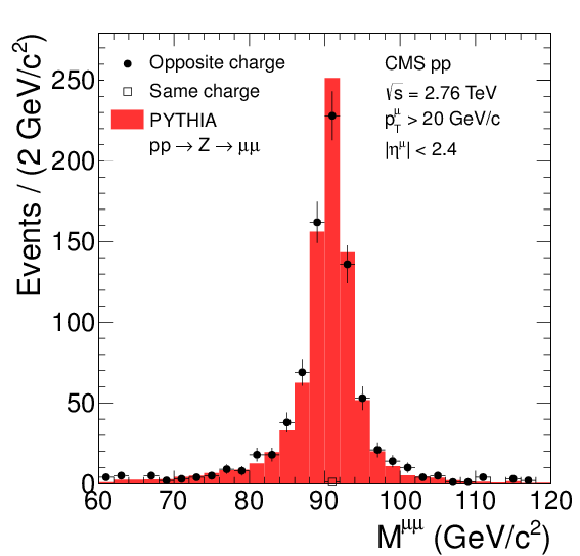
png pdf |
Figure 1-c:
Dimuon invariant mass spectra for muons with $ {| \eta ^ {{\mu }} | } < 2.4$ and $ {p_{\mathrm {T}}} ^\mu > 20$ GeV/$c$ in PbPb (a) and in pp (c) collisions and dielectron invariant mass spectra for electrons with $ {| \eta ^ {\mathrm {e}} | } < 1.44$ and $ {p_{\mathrm {T}}} ^{ {\mathrm {e}}}>20$ GeV/$c$ in PbPb (b) and in pp (d) collisions. Full black circles represent opposite-charge lepton pair events and open black squares represent same-charge lepton pair events. Superimposed and normalized to the number of Z boson candidates in data is the MC simulation from PYTHIA $\mathrm {NN}\to {\mathrm {Z}}\to {{\mu ^+}} {{\mu ^-}}$ or $ {\mathrm {e}^+} {\mathrm {e}^-}$, where N is a nucleon from the proper mix of protons and neutrons, embedded in HYDJET simulated events for the PbPb case, and $ {\mathrm {p}} {\mathrm {p}}\to {\mathrm {Z}}\to {{\mu ^+}} {{\mu ^-}}$ or $ {\mathrm {e}^+} {\mathrm {e}^-}$ for the pp case. |
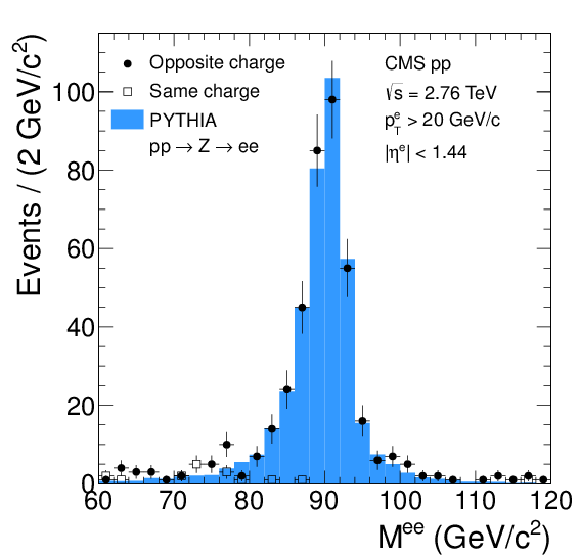
png pdf |
Figure 1-d:
Dimuon invariant mass spectra for muons with $ {| \eta ^ {{\mu }} | } < 2.4$ and $ {p_{\mathrm {T}}} ^\mu > 20$ GeV/$c$ in PbPb (a) and in pp (c) collisions and dielectron invariant mass spectra for electrons with $ {| \eta ^ {\mathrm {e}} | } < 1.44$ and $ {p_{\mathrm {T}}} ^{ {\mathrm {e}}}>20$ GeV/$c$ in PbPb (b) and in pp (d) collisions. Full black circles represent opposite-charge lepton pair events and open black squares represent same-charge lepton pair events. Superimposed and normalized to the number of Z boson candidates in data is the MC simulation from PYTHIA $\mathrm {NN}\to {\mathrm {Z}}\to {{\mu ^+}} {{\mu ^-}}$ or $ {\mathrm {e}^+} {\mathrm {e}^-}$, where N is a nucleon from the proper mix of protons and neutrons, embedded in HYDJET simulated events for the PbPb case, and $ {\mathrm {p}} {\mathrm {p}}\to {\mathrm {Z}}\to {{\mu ^+}} {{\mu ^-}}$ or $ {\mathrm {e}^+} {\mathrm {e}^-}$ for the pp case. |
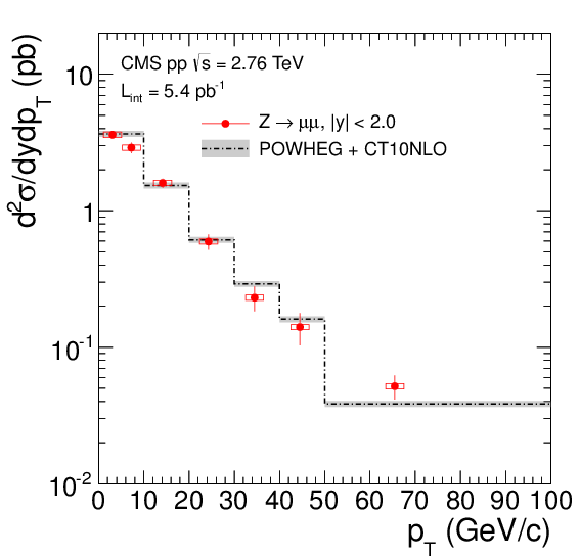
png pdf |
Figure 2-a:
|
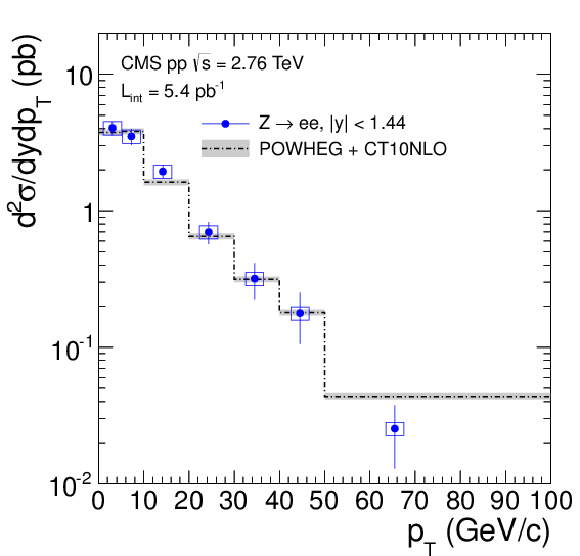
png pdf |
Figure 2-b:
|
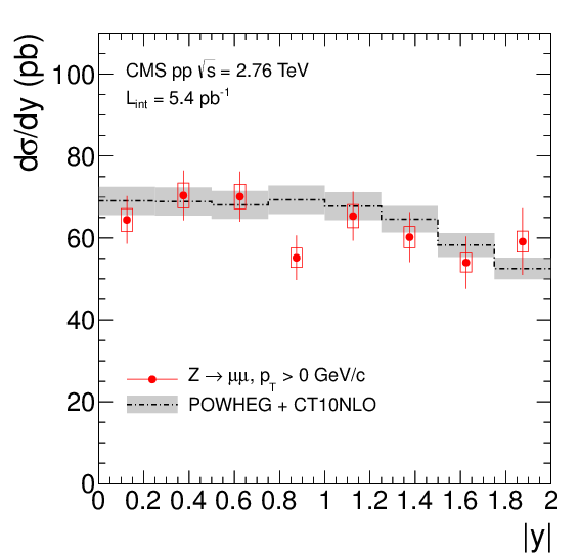
png pdf |
Figure 2-c:
|
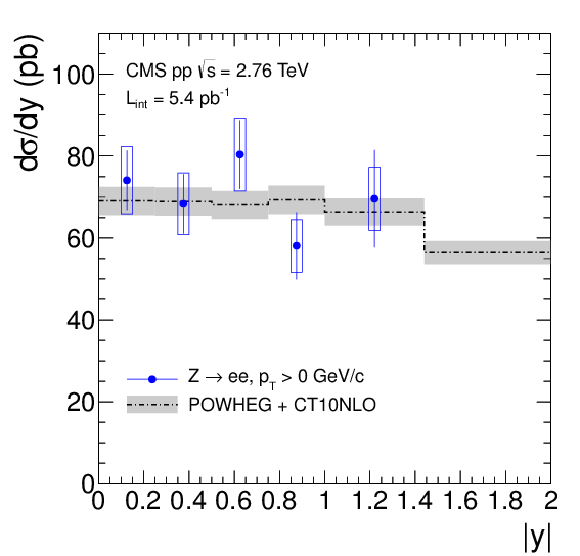
png pdf |
Figure 2-d:
|
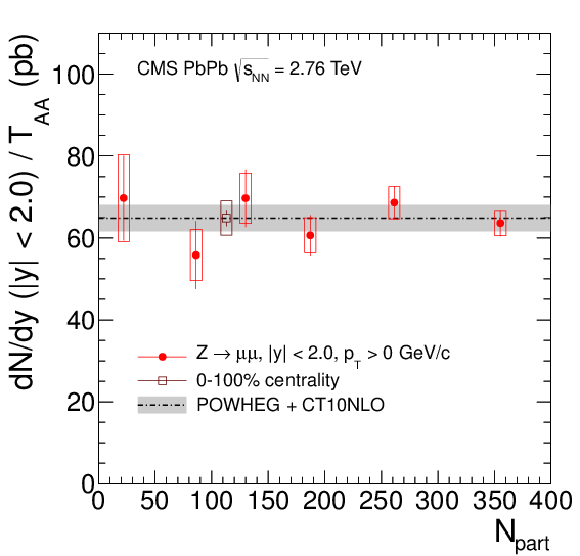
png pdf |
Figure 3-a:
|
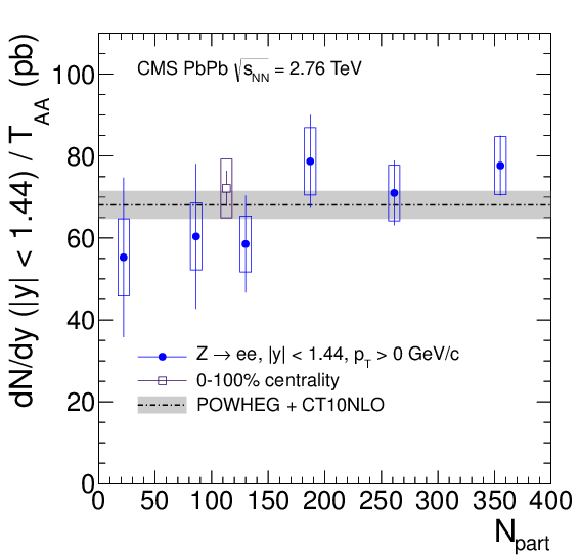
png pdf |
Figure 3-b:
|
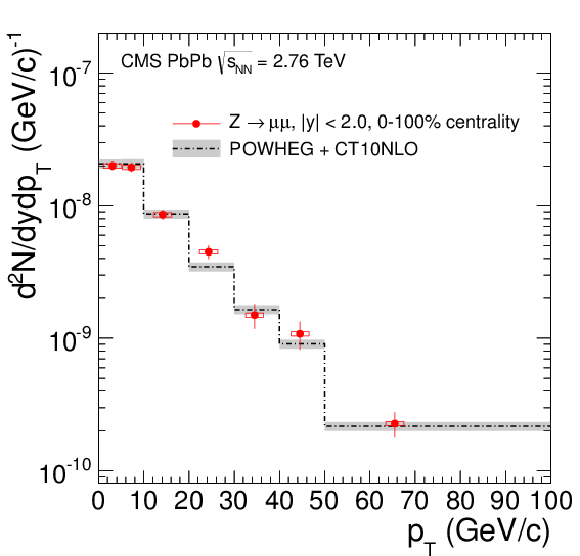
png pdf |
Figure 4-a:
|
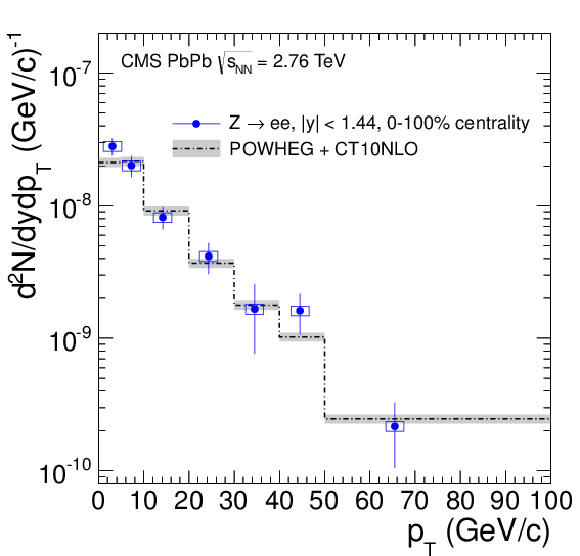
png pdf |
Figure 4-b:
|
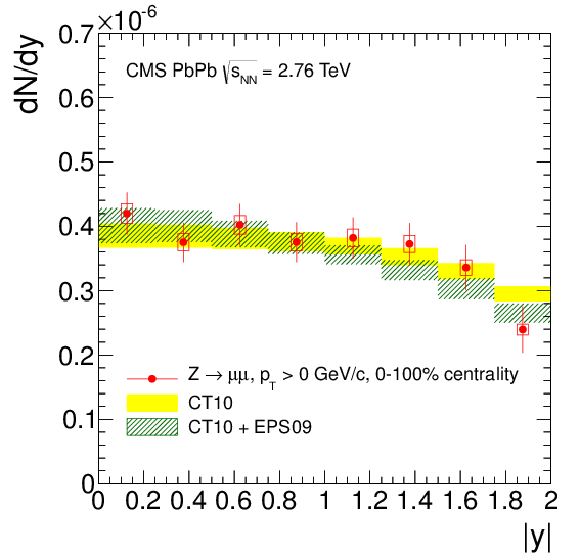
png pdf |
Figure 4-c:
|
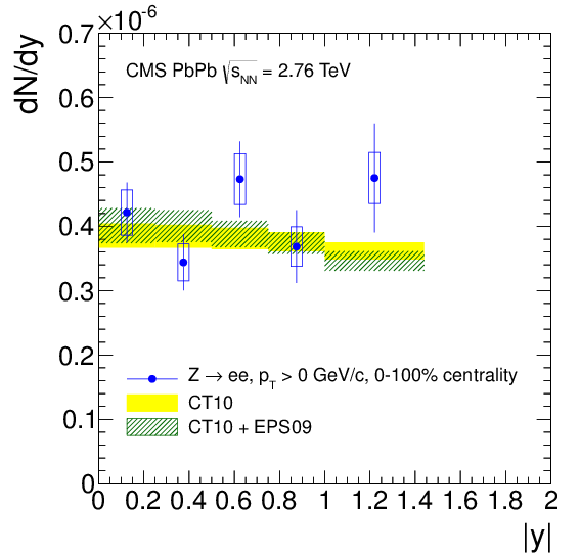
png pdf |
Figure 4-d:
|
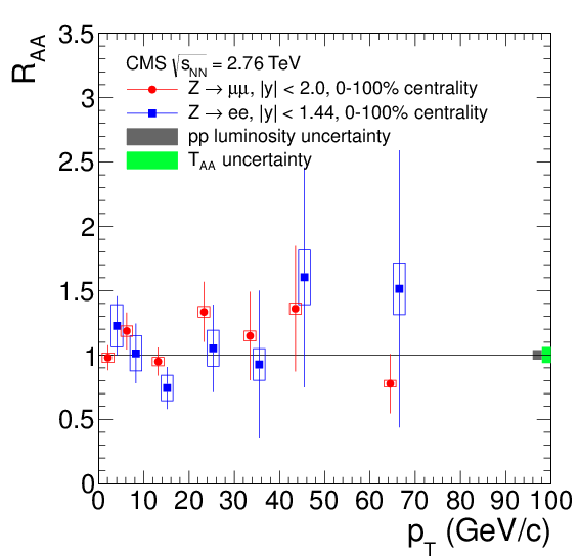
png pdf |
Figure 5-a:
|
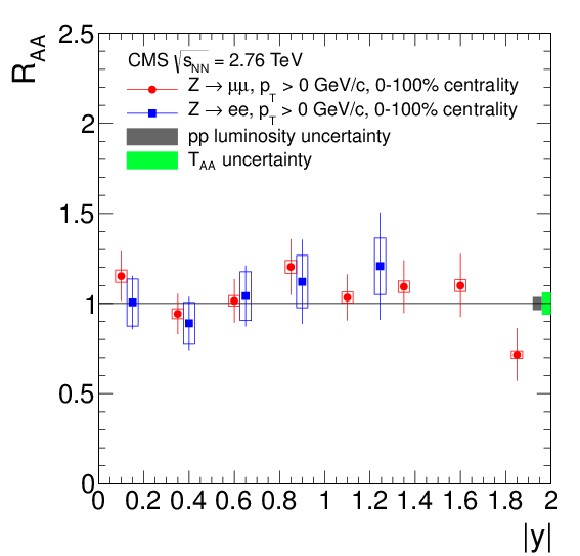
png pdf |
Figure 5-b:
|
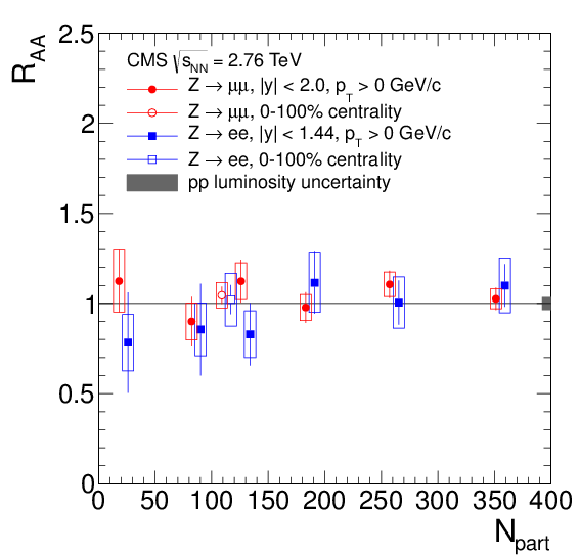
png pdf |
Figure 5-c:
|

png pdf |
Figure 6-a:
|
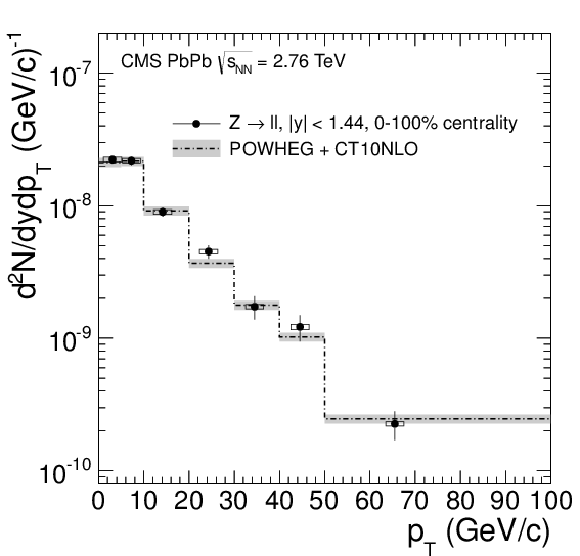
png pdf |
Figure 6-b:
|
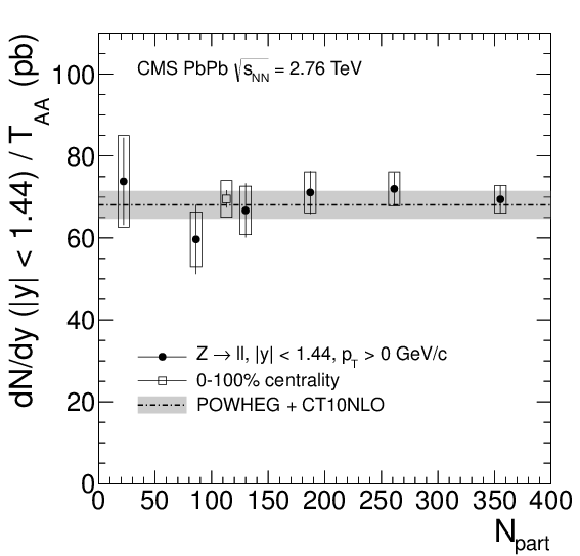
png pdf |
Figure 6-c:
|
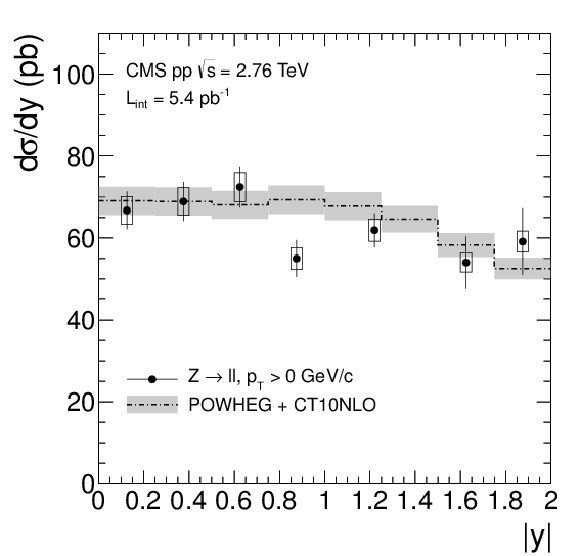
png pdf |
Figure 7-a:
|
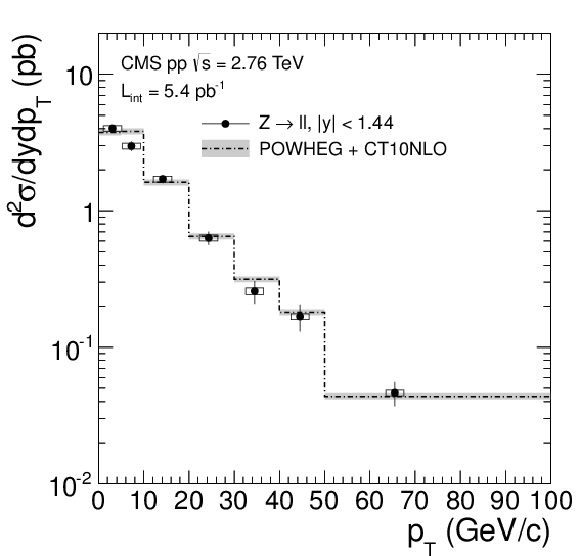
png pdf |
Figure 7-b:
|
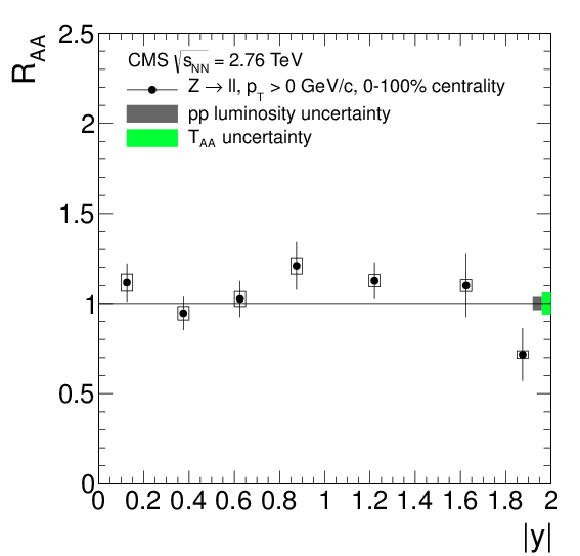
png pdf |
Figure 8-a:
|
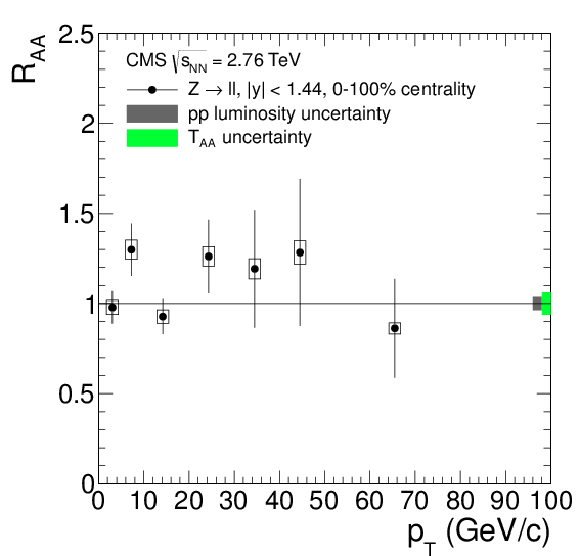
png pdf |
Figure 8-b:
|

png pdf |
Figure 8-c:
|

|
Compact Muon Solenoid LHC, CERN |

|

|

|

|

|

|